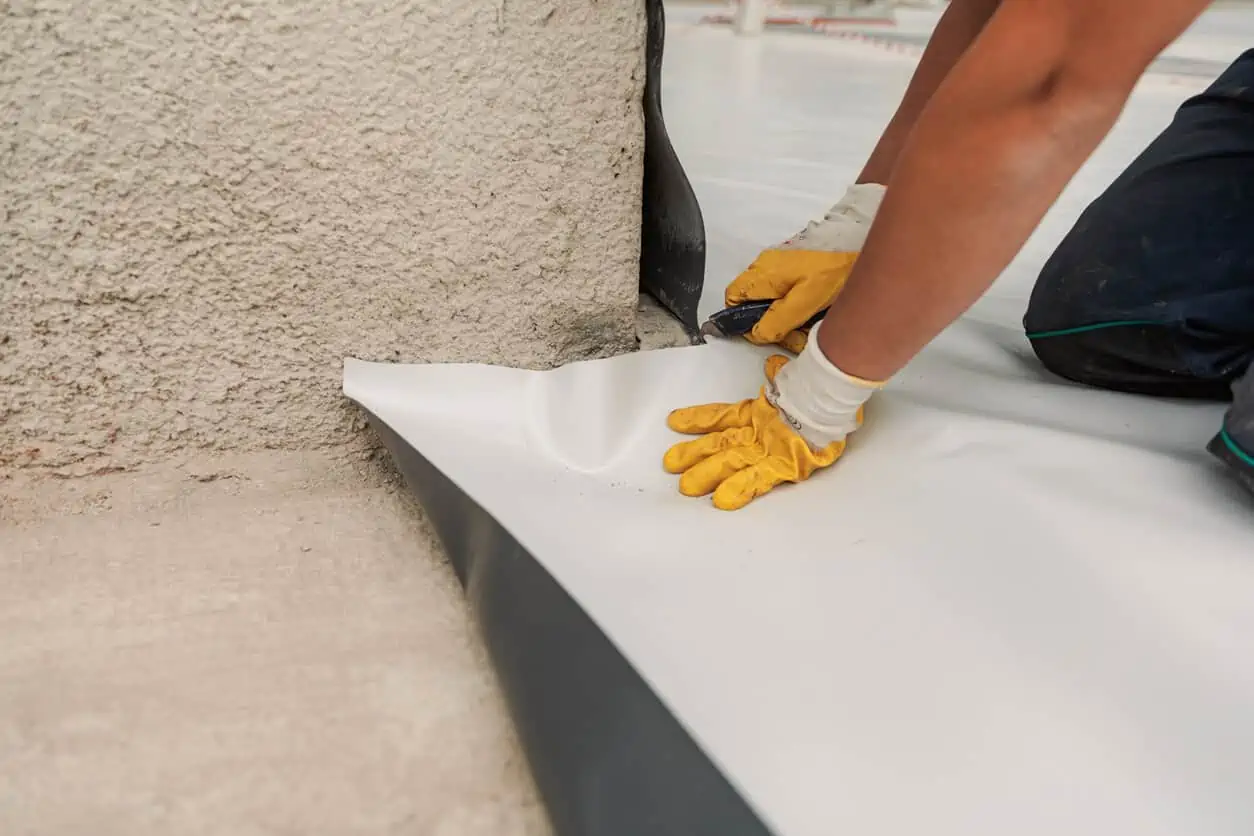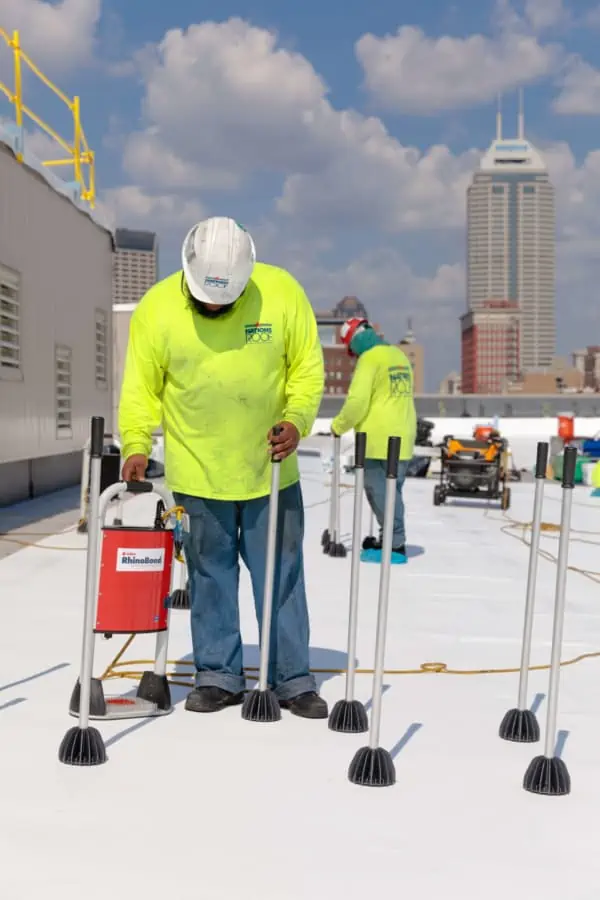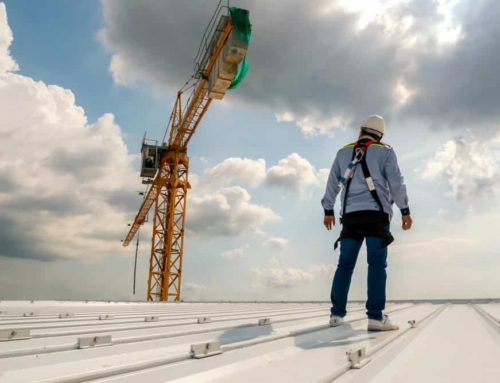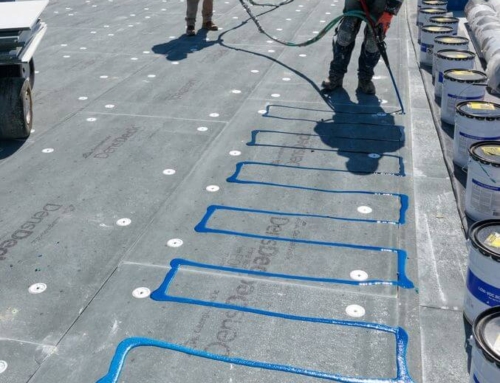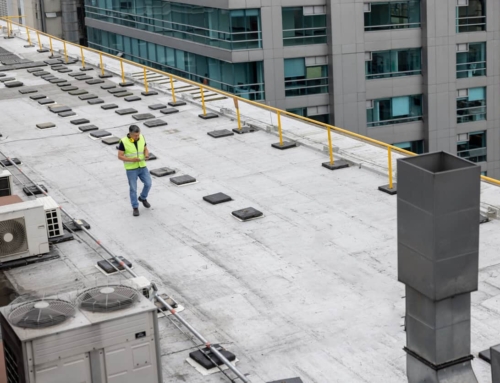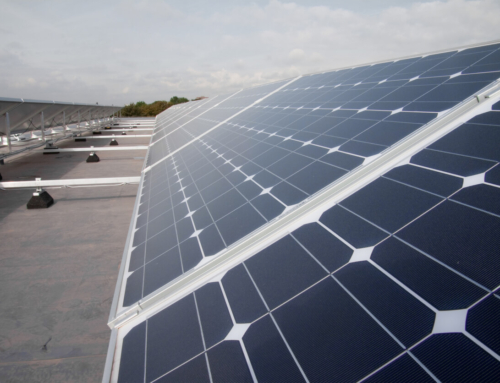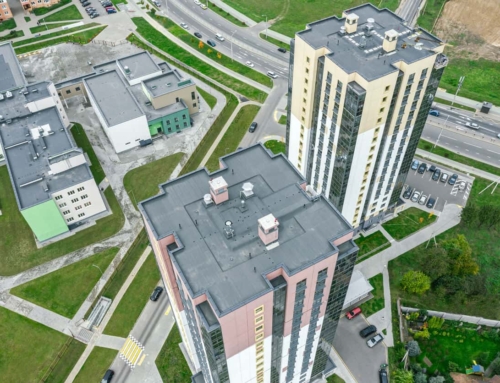To educate our customers, we would like to take some time to compare two types of single-ply commercial roofing systems: TPO (Thermoplastic Polyolefin) and EPDM (Ethylene Propylene Diene Monomer). We are often asked to compare TPO vs. EPDM commercial roofs, so here is the essential information you need to know about each system.
Contents
- 1 TPO Roofing Systems
- 2 EPDM Roofs
- 3 Which Roofing System is Right for You?
- 4 Key Takeaways
- 4.0.0.1 TPO and EPDM are both single-ply roofing membranes and popular commercial roofing systems.
- 4.0.0.2 Both TPO and EPDM are known for their energy efficiency as TPO systems reflect sunlight and EPDM systems insulate during the winter.
- 4.0.0.3 Contact Nations Roof to help you choose the right roofing system for your commercial building.
TPO Roofing Systems
TPO roof sheets are a heat-weldable blend of polypropylene and ethylene propylene rubber components. They are polyester reinforced and contain UV stabilizers, fillers, pigments, and flame retarders. A TPO roofing system is typically installed in two ways: mechanically attached or fully adhered.
TPO membranes are available in white, gray, and tan and come in 45, 60, or 80 mil thicknesses. They offer excellent resistance to UV rays. In fact, they can reflect nearly 87 percent of the rays away from a roof, making them ideal choices for property owners who wish to reduce their cooling costs. In addition, your building’s TPO membrane contributes toward LEED credit qualification, and most TPO membranes are Energy Star-rated and Cool Roof Rating Council-approved.
In addition, TPO roofing systems are flexible in colder climates. They are also highly resistant to environmental pollutants and chemicals and resist abrasions, tears, and punctures.
A properly maintained TPO roof may last 20-30 years and typically carry a 15-20 year warranty.
Benefits of TPO Roofing Systems
- TPO roof sheets are flexible in colder temperatures.
- A TPO system offers high resistance to UV rays, allowing commercial air conditioners to work more efficiently.
- A TPO roofing system is extremely durable against chemicals, mold growth, and physical damage.
EPDM Roofs
EPDM roofing is made from an industrial-grade synthetic rubber that will expand and contract when temperatures change. It is sometimes described as a rubber roof. It has three primary ingredients, ethylene, propylene, and carbon black, which are derived from oil and natural gas. EPDM can be installed either fully adhered, mechanically attached, or ballasted – with the seams of the roofing system sealed with liquid adhesives or, even more commonly, with specially formulated tape.
EPDM membranes are available in black or white and come in a wide range of lengths and up to 50′ x 200′ sheets! Thicknesses are available in 45, 60, and 90 mils. EPDM can also have polyester reinforcements.
A properly maintained EPDM roof system can last beyond 30 years.
Benefits of an EPDM Roofing System
- EPDM roofs are popular for low-slope buildings because the material is remarkably durable and resilient.
- The EPDM membrane is resistant to the sun’s UV and ultraviolet rays, which makes it a versatile, durable solution in all climates.
- The synthetic rubber surface of a black EPDM roof can help reduce heating costs in winter months.
- EPDM roofs are compatible with many silicone and acrylic coatings which may help extend the life of the membrane and reduce energy costs.
Which Roofing System is Right for You?
Nations Roof, your local commercial roofing specialists, will help you decide between EPDM roofing systems and TPO roofs for your commercial building. We will consider your geographic location, building usage, and other external factors (such as if you have solar panels installed) as we guide you through your decision on which single-ply roofing membrane works best for your situation.
Nations Roof is an industry leader. We have experience with all types of commercial roof systems for industrial buildings, offices, hospitality facilities, distribution centers, retail centers, educational facilities, and more.
Key Takeaways
-
TPO and EPDM are both single-ply roofing membranes and popular commercial roofing systems.
-
Both TPO and EPDM are known for their energy efficiency as TPO systems reflect sunlight and EPDM systems insulate during the winter.
-
Contact Nations Roof to help you choose the right roofing system for your commercial building.

